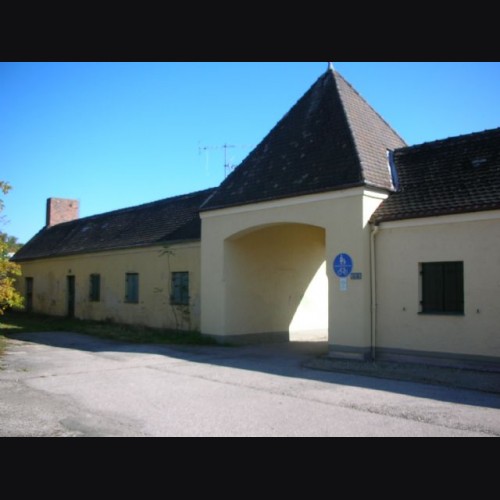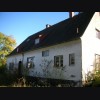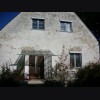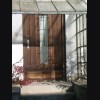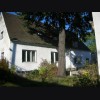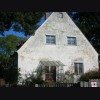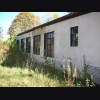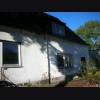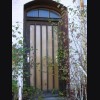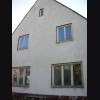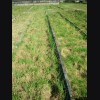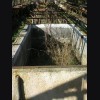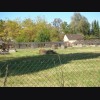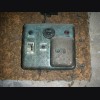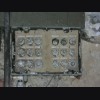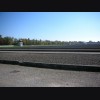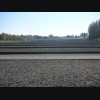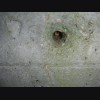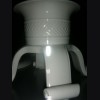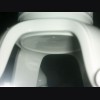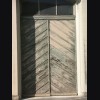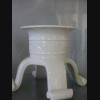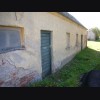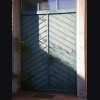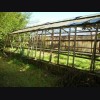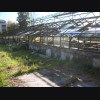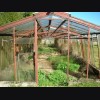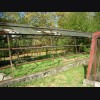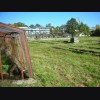Dachau Concentration Camp, Allach, And The Plantation # 1061
In the 1970's with the
war over only 30 years prior and my father being a collector of Third
Reich artifacts, the people that were in and about my life were
comprised of other collectors, neighbors, and people who were actually
interned within a concentration camp or had family that had experience
with them. The picture was not too pretty really.
Even today I
can remember some of the conversations that took place and how some had
gathered some heat, which is not difficult when discussing the
concentration camps or when talking to someone who was locked inside
one. But it was this environment that no doubt lead me to the book case
and to read about this era at an early age.
Dachau is one of the most notable and most recognizable names within the camp systems that ran throughout Europe during the Third Reich, and Dachau would be high on my list of things to see on my trip to Germany, and this camp has a history unlike most others.
The first stop at Dachau would be on the way home from Berchtesgaden with some collector friends where we had spent a couple nights. The route to this camp runs off the Autobahn and down a small scenic two lane road and the small town of Dachau/ Allach. A pretty rural area all in all and it was not long before I was within a mile of the camp and wondering if the navigation was wrong as I was expecting this to be in the middle of nowhere. Its not, and no sooner did I question the navigation, the front wall of the camp came into view; Its huge.
Dachau takes in reported one million visitors a year from around the world and this being a Sunday there was quite a bit of traffic in and around the camp. What remains is the administrative building with houses the exhibits, two sets of barracks, and to the rear of the camp the crematorium areas, and firing range. What is not readily accessible and requires some work is the SS industrial complex which ran on the outside of the fence area and dwarfed this huge camp.
The exhibit in the administration
building is also huge, as is the building itself and its takes a good
couple hours to walk this camp and through the buildings that remain,
after a couple hours of wandering around and coming through the
exhibition on the wall was the large aerial map of the camp from WWII.
This gave me the location of the Plantation or the Dachau Herb Gardens which was one of the many SS economic concerns that surrounded the outside of the camp area.
If
the map was accurate the herb gardens would be the same distance as the
exterior wall, or about a mile away. Driving a mile down the road and
making a right turn put us right at the maintenance buildings and
remnants of green houses for this SS Project. But here there were no
tourists, no memorials, and no signs, it was Sunday so there were no
workers for the surrounding buildings and this made life easy.
Walking
down a path through the arch there remained 5 or 6 buildings all of
which were locked and shuttered, the green houses looked like they could
come down any moment. But cut through a greenhouse by the admin
building and through the field and come in through another greenhouse
and your in the buildings, a couple of them anyway. After walking
through a concentration camp for two hours I am getting spooked by green
houses and buildings long abandoned.
The plantation area
would have been directly across the street but is now an industrial
complex, but to the rear is field after field of growth of herbs.
Remnants of green houses that came down were still in place and they
must have been used post war as well as the furnace in one building and
some of the electric set ups were post 45.
The labor utilized
in these area's would lead to some of the highest mortality rates in
comparison to most any other concerns within the Dachau system as the
work was grueling. It was for the most part a death sentence, but I was
surprised that so much remained of it.
By this time it was
late afternoon and some miles away from the camp area was the house
where Allach Porcelain was established under Franz Nagy and Carl
Diebitsch and that needed to be seen and photographed to complete the
day.
Following the navigation we came to a very nice rural
area with much activity and rolled up on this now abandoned house where
some of the finest and most desirable porcelain ever manufactured was
made under the eyes of Himmler and his SS, Allach Porcelain.
The
first noteworthy and obvious thing I noticed as we hopped out of the
car was the sign on the fence. Said something like "Achtung Verbotten
Halt" hmmmmm, but I do not read German, maybe that is why they put the
big red open handed palm under the words almost saying something like
Stop!?. This was not good as the fence blocked the shots.
I
turned to my German speaking friend who lives in Germany to ask what
could happen if I ignored the sign? the answer was that we could be
arrested if caught but that they may not arrest us. I was not comforted
too much by this as there were people all over riding bikes and walking
looking at us standing on the road staring at an abandoned house. It was
obvious we were Americans, who else does this?.
I get through the fence, through a neighbors yard and start shooting photos of the house, when I get to the left side of the house, the furthest from my escape; a little old lady on a bicycle stops and jumps off her bike and luckily runs into my German speaking friend who explained that we were just shooting photo's of Heinrich Himmler's porcelain factory, not sure why he felt inclined to be so honest, but by the time I got out and around to the street the lady was laughing and did not believe him, so she said.
The second Allach facility was in the immediate area of
the camp, as were all the SS barracks, hospital, garage facilities and
various other items of interest and I knew I had to make my way back
there. With a days rest I drove to Munich to look around. Its a huge
city and like driving around New York City, which is just not for me. I
managed to park after an some time and went in on foot to the
Hofbrauhaus for dinner and drinks, and the following morning I would
head back to Dachau and try to access some shots from the woods.
I set the navigation and Dachau is literally 13 miles away, really close to Munich, and now its a weekday and early in the morning and there is fog surrounding the camp giving it a different feel and less people and at one point I was the only one in the main camp as I looked around. I could not remember if the rear area from the crematorium were closed off and with the aerial photograph in my head, started out down the long wall to get there and found out I could not get through and walked the whole wall back, so doing it on foot through the forest was out, this would have been preferred.
Driving up the main road along the
camp are all the old SS barracks which are pretty active and the
buildings are for the most part intact, but I could not get to Allach or
many of the other places as they are forbidden area's, which is of
course why I wanted to do it on foot as I could both look and if need be
run without having the burden of a car, and the aerial map would no
doubt work better if on foot.
In retrospect it seems kind of
funny as an American and poking around areas in Germany that many of the
people shun or wish to forget, that I was at times looking over my
shoulder and ready to run at a moments notice for wanting to see things
they did not want to display or show. Can't say I believe it should be
that way.
However, they will show you what they want to show
you and if you like history or your a collector, it is certainly worth
the time to visit such a place and see it for yourself. There is no
aerial photograph, picture, or drawing that can match walking through
that gate on foot. And if your interest extends to area's that are
outside a ticket counter or off the beaten path, bring sneakers with
you. With the American language and a camera you are quite welcome in
most places in Germany, but should you wander too far off that path it
would seem they know what you are looking for and you might need those
sneakers.
(Dachau Concentration Camp, Allach, And The Plantation)
In the 1970's with the
war over only 30 years prior and my father being a collector of Third
Reich artifacts, the people that were in and about my life were
comprised of other collectors, neighbors, and people who were actually
interned within a concentration camp or had family that had experience
with them. The picture was not too pretty really.
Even today I
can remember some of the conversations that took place and how some had
gathered some heat, which is not difficult when discussing the
concentration camps or when talking to someone who was locked inside
one. But it was this environment that no doubt lead me to the book case
and to read about this era at an early age.
Dachau is one of the most notable and most recognizable names within the camp systems that ran throughout Europe during the Third Reich, and Dachau would be high on my list of things to see on my trip to Germany, and this camp has a history unlike most others.
The first stop at Dachau would be on the way home from Berchtesgaden with some collector friends where we had spent a couple nights. The route to this camp runs off the Autobahn and down a small scenic two lane road and the small town of Dachau/ Allach. A pretty rural area all in all and it was not long before I was within a mile of the camp and wondering if the navigation was wrong as I was expecting this to be in the middle of nowhere. Its not, and no sooner did I question the navigation, the front wall of the camp came into view; Its huge.
Dachau takes in reported one million visitors a year from around the world and this being a Sunday there was quite a bit of traffic in and around the camp. What remains is the administrative building with houses the exhibits, two sets of barracks, and to the rear of the camp the crematorium areas, and firing range. What is not readily accessible and requires some work is the SS industrial complex which ran on the outside of the fence area and dwarfed this huge camp.
The exhibit in the administration
building is also huge, as is the building itself and its takes a good
couple hours to walk this camp and through the buildings that remain,
after a couple hours of wandering around and coming through the
exhibition on the wall was the large aerial map of the camp from WWII.
This gave me the location of the Plantation or the Dachau Herb Gardens which was one of the many SS economic concerns that surrounded the outside of the camp area.
If
the map was accurate the herb gardens would be the same distance as the
exterior wall, or about a mile away. Driving a mile down the road and
making a right turn put us right at the maintenance buildings and
remnants of green houses for this SS Project. But here there were no
tourists, no memorials, and no signs, it was Sunday so there were no
workers for the surrounding buildings and this made life easy.
Walking
down a path through the arch there remained 5 or 6 buildings all of
which were locked and shuttered, the green houses looked like they could
come down any moment. But cut through a greenhouse by the admin
building and through the field and come in through another greenhouse
and your in the buildings, a couple of them anyway. After walking
through a concentration camp for two hours I am getting spooked by green
houses and buildings long abandoned.
The plantation area
would have been directly across the street but is now an industrial
complex, but to the rear is field after field of growth of herbs.
Remnants of green houses that came down were still in place and they
must have been used post war as well as the furnace in one building and
some of the electric set ups were post 45.
The labor utilized
in these area's would lead to some of the highest mortality rates in
comparison to most any other concerns within the Dachau system as the
work was grueling. It was for the most part a death sentence, but I was
surprised that so much remained of it.
By this time it was
late afternoon and some miles away from the camp area was the house
where Allach Porcelain was established under Franz Nagy and Carl
Diebitsch and that needed to be seen and photographed to complete the
day.
Following the navigation we came to a very nice rural
area with much activity and rolled up on this now abandoned house where
some of the finest and most desirable porcelain ever manufactured was
made under the eyes of Himmler and his SS, Allach Porcelain.
The
first noteworthy and obvious thing I noticed as we hopped out of the
car was the sign on the fence. Said something like "Achtung Verbotten
Halt" hmmmmm, but I do not read German, maybe that is why they put the
big red open handed palm under the words almost saying something like
Stop!?. This was not good as the fence blocked the shots.
I
turned to my German speaking friend who lives in Germany to ask what
could happen if I ignored the sign? the answer was that we could be
arrested if caught but that they may not arrest us. I was not comforted
too much by this as there were people all over riding bikes and walking
looking at us standing on the road staring at an abandoned house. It was
obvious we were Americans, who else does this?.
I get through the fence, through a neighbors yard and start shooting photos of the house, when I get to the left side of the house, the furthest from my escape; a little old lady on a bicycle stops and jumps off her bike and luckily runs into my German speaking friend who explained that we were just shooting photo's of Heinrich Himmler's porcelain factory, not sure why he felt inclined to be so honest, but by the time I got out and around to the street the lady was laughing and did not believe him, so she said.
The second Allach facility was in the immediate area of
the camp, as were all the SS barracks, hospital, garage facilities and
various other items of interest and I knew I had to make my way back
there. With a days rest I drove to Munich to look around. Its a huge
city and like driving around New York City, which is just not for me. I
managed to park after an some time and went in on foot to the
Hofbrauhaus for dinner and drinks, and the following morning I would
head back to Dachau and try to access some shots from the woods.
I set the navigation and Dachau is literally 13 miles away, really close to Munich, and now its a weekday and early in the morning and there is fog surrounding the camp giving it a different feel and less people and at one point I was the only one in the main camp as I looked around. I could not remember if the rear area from the crematorium were closed off and with the aerial photograph in my head, started out down the long wall to get there and found out I could not get through and walked the whole wall back, so doing it on foot through the forest was out, this would have been preferred.
Driving up the main road along the
camp are all the old SS barracks which are pretty active and the
buildings are for the most part intact, but I could not get to Allach or
many of the other places as they are forbidden area's, which is of
course why I wanted to do it on foot as I could both look and if need be
run without having the burden of a car, and the aerial map would no
doubt work better if on foot.
In retrospect it seems kind of
funny as an American and poking around areas in Germany that many of the
people shun or wish to forget, that I was at times looking over my
shoulder and ready to run at a moments notice for wanting to see things
they did not want to display or show. Can't say I believe it should be
that way.
However, they will show you what they want to show
you and if you like history or your a collector, it is certainly worth
the time to visit such a place and see it for yourself. There is no
aerial photograph, picture, or drawing that can match walking through
that gate on foot. And if your interest extends to area's that are
outside a ticket counter or off the beaten path, bring sneakers with
you. With the American language and a camera you are quite welcome in
most places in Germany, but should you wander too far off that path it
would seem they know what you are looking for and you might need those
sneakers.
(Dachau Concentration Camp, Allach, And The Plantation)


